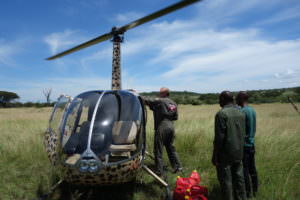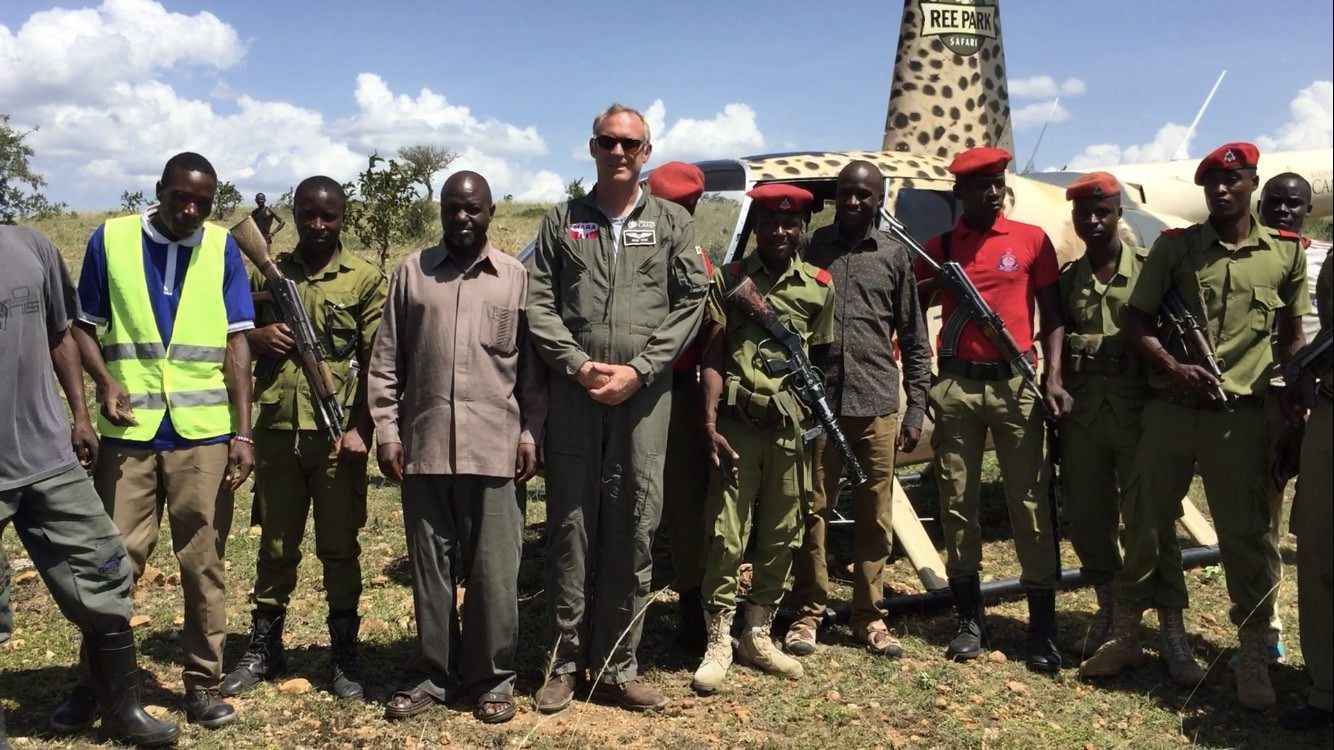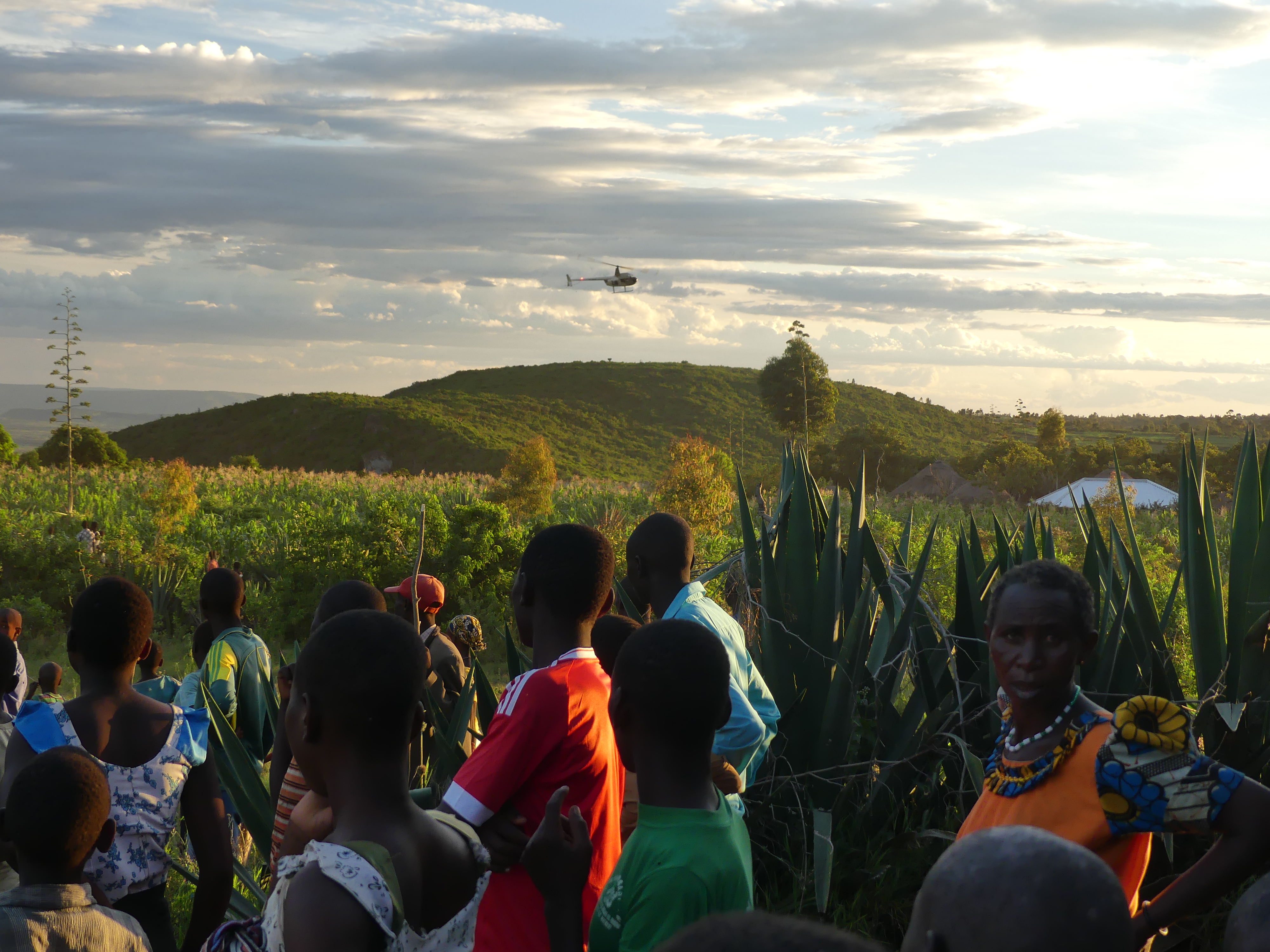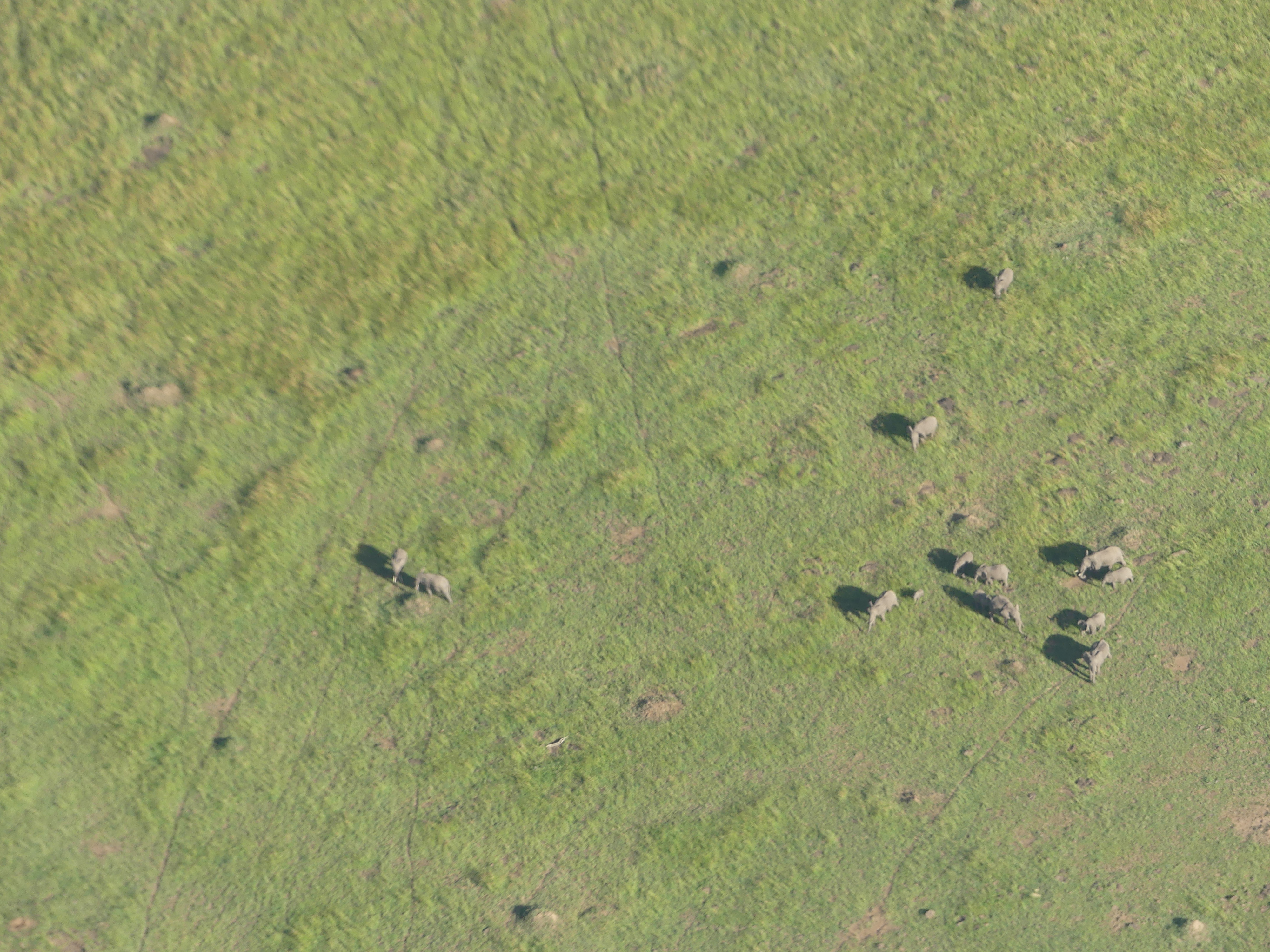 One of the key advantages of having access to the Karen Blixen Camp Ree Park Safari helicopter (pictured) is that it has allowed Mara Elephant Project to expand our area of operation into the Serengeti. The Maasai Mara ecosystem is an extension of the vast Serengeti ecosystem and is Kenya’s most important wildlife area and tourism asset. Similar in Tanzania, the Serengeti is on the United Nation’s Educational, Scientific and Cultural Organization World Heritage List because of its annual migration of nearly two million wildebeest and zebra, the ecosystem is also home to an estimated 40% of Africa’s large mammal species, yet covers only 0.1% of the continent’s land surface. The Tanzania portion of the Mara-Serengeti ecosystem stretches 25,000 km2 though the Ngorongo Conservation, Serengeti National Park Grumeti Game Reserve. The Kenya portion covers an additional 7,000 km2 from the Maasai Mara, Loita Hills and Nyekweri Forest.
One of the key advantages of having access to the Karen Blixen Camp Ree Park Safari helicopter (pictured) is that it has allowed Mara Elephant Project to expand our area of operation into the Serengeti. The Maasai Mara ecosystem is an extension of the vast Serengeti ecosystem and is Kenya’s most important wildlife area and tourism asset. Similar in Tanzania, the Serengeti is on the United Nation’s Educational, Scientific and Cultural Organization World Heritage List because of its annual migration of nearly two million wildebeest and zebra, the ecosystem is also home to an estimated 40% of Africa’s large mammal species, yet covers only 0.1% of the continent’s land surface. The Tanzania portion of the Mara-Serengeti ecosystem stretches 25,000 km2 though the Ngorongo Conservation, Serengeti National Park Grumeti Game Reserve. The Kenya portion covers an additional 7,000 km2 from the Maasai Mara, Loita Hills and Nyekweri Forest.

An aerial view of the Serengeti.
The Serengeti’s proximity and importance to MEP’s area of operation meant that after six years of operations, MEP needed to start expanding into Tanzania to continue to successfully complete our mission to protect elephants and conserve the greater Mara ecosystem. In 2016, an extremely important partnership between MEP and the Tanzania National Parks (TANAPA) was established that allowed MEP to aerially monitor any of our 23 collared elephants residing in the Serengeti on a monthly basis. Through the aerial monitoring program we have identified that the 23 collared elephants represent between 400 and 600 elephants, as counted each month.

MEP CEO Marc Goss with TANAPA rangers.
Collar data is the single best indicator for identifying elephant density hotspots, defining corridors, and illustrating elephant movements to target audiences. Combined data from a sample number of elephant collars spread across the elephant population present an accurate extent of the current elephant range. MEP monitors 23 elephants daily via Google Earth, remotely through the collars, but also by air with the helicopter, and with the ranger teams on the ground. MEP generates monthly tracking reports, constructs density and movement maps, with partner Save the Elephants, and populates a shared Geofence database. To date, this data has been used to deploy rapid response units, develop maps illustrating the density and movement of elephants, which are used internally to inform MEP’s area of operations and externally as part of the quantifiable data for the Narok County Spatial Plan. This information is used to anticipate possible human-elephant conflict incidents as each day coordinates are sent to ground patrols who use these to check on the elephants. Depending on the satellite image quality, it is possible to see settlements near the collared elephant.
In June and July alone MEP responded to over 78 human-elephant conflict incidents, many of which were in Tanzania.
A video of Marc Goss piloting the helicopter to move an elephant out of Tanzania farms.
In 2017, through growing our partnership with TANAPA and Tanzania Wildlife Research Institute (TAWIRI), MEP is in a position to expand our model into the Serengeti. In the near future we’d like to establish a new ranger team to monitor and collar 10 additional elephants in Tanzania in partnership with TAWIRI. This team will be formed under the umbrella of MEP and the rapid response to poaching and conflict tactics which MEP have developed in Kenya. The team members will be made of agencies from Tanzania, led by a MEP team leader, and trained on the MEP Method.

Tanzania villagers watching Marc Goss use the helicopter to move elephants safely away from their farms.
If we are able to collar 10 additional elephants and expand our collared elephant population across the rangeland to over 30, the data will provide statistically sound representations of bulls at risk and flagship elephants. When collaring elephants, MEP focuses on candidates that will gather useful spatial data- elephants in border areas, areas of conflict or areas outside conservancies or national reserves, candidates that represent elephants which crop raid – identified across the dispersal area and candidates that represent large herds.

A large herd of elephants in Tanzania spotted from the air.
MEP will continue to develop these important partnerships in Tanzania as well as expand, not only our area of operation, but our collared elephant population in the Serengeti. Ultimately, all of this will help us in our mission to protect elephants to conserve the greater Mara ecosystem.


